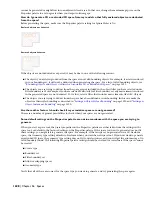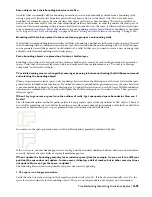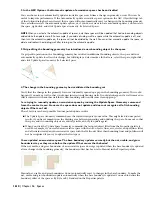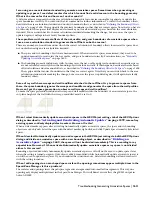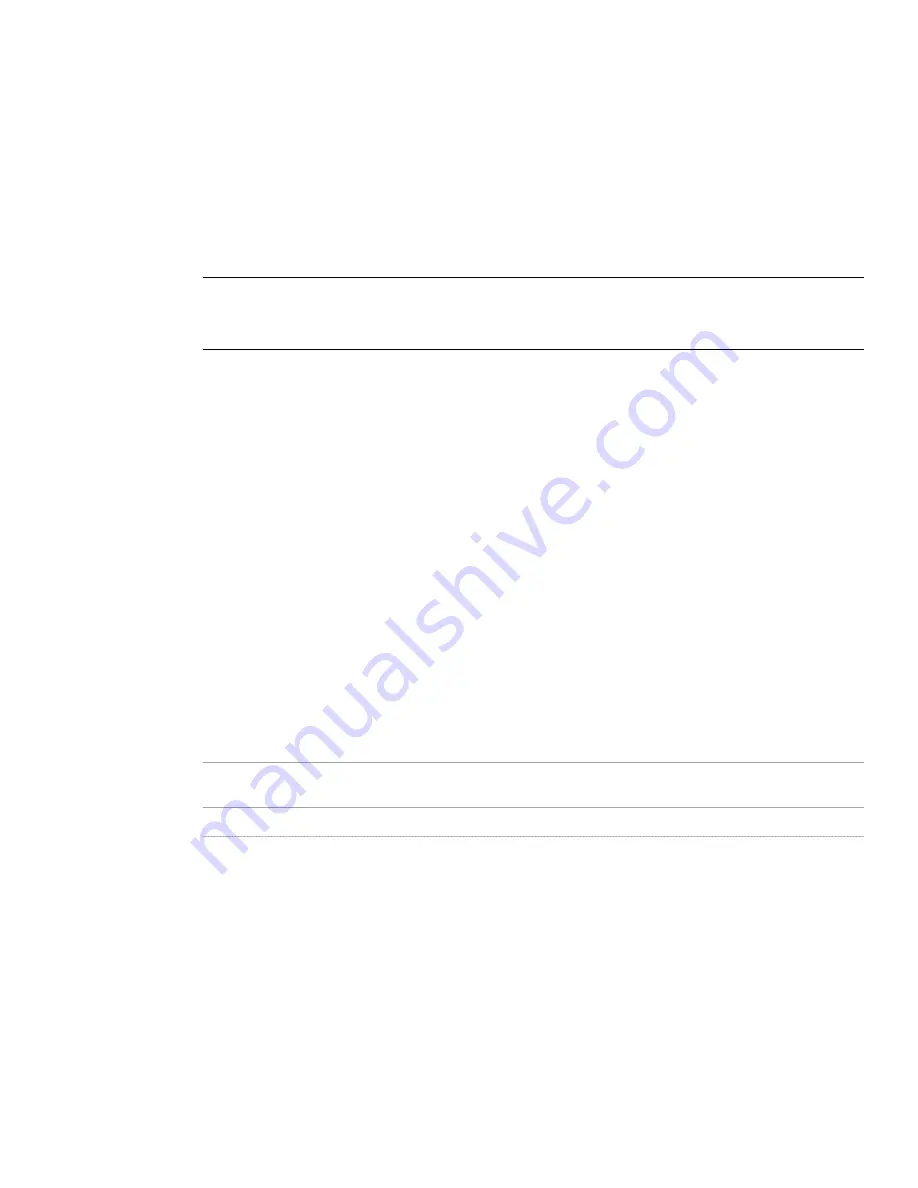
(You may have to scroll to display the desired tool.)
2
On the Properties palette, expand Basic, and expand General.
3
Select a style.
4
Enter a name for the space.
If the space style has a name list associated with it, you can select a name from the drop-down list. For
more information, see “
Attaching a List Definition to a Space Style
” on page 1687.
5
Select a tag for the space.
If no space tags are contained in the list, you can drag a tag into the drawing from the Content Browser.
You can also create your own space tags from multi-view blocks.
NOTE The Associative property is interlinked with the Create type. If the Create type is Generate, the Associative
setting defaults to Yes. If the Create type is Insert, Rectangle, or Polygon, the Associative setting defaults to No
and becomes read-only.
6
For Offset boundaries, select how the 4 space boundaries (base, net, usable, and gross boundary) are offset
from each other:
■
Manual: The offsets of the net, usable, and gross boundaries from the base boundary can be manually
edited with grips. Each boundary has its own set of grips, except for the base boundary, which is
generated from the bounding objects.
■
By Style: The offsets of the net, usable, and gross boundaries from the base boundary are defined in
the space style. The boundaries have no grips. For more information, see “
Specifying Space Boundary
Offsets in a Space Style
” on page 1687.
■
By Standard: The offsets of the net, usable, and gross boundaries from the base boundary are defined
by the boundary offset calculation standard selected for the drawing. The boundaries have no grips.
For more information, see “
Specifying an Area Calculation Standard for a Drawing
” on page 1629.
7
For Create type, select Generate.
8
To add a calculation modifier to the space, click the setting for Calculation modifiers, and select one or
more calculation modifiers to add to the space.
For information about calculation modifiers, see “
Adding and Removing Calculation Modifiers for Spaces
”
on page 1724.
9
For Boundary set, specify how the bounding objects for the space should be selected:
Then…
If you want to…
select Reset visible boundaries.
automatically let the software detect the bounding
objects visible in the drawing area
select Select boundaries.
select bounding objects manually in the drawing
10
To determine which object types should be used as bounding objects, select an option for Filter boundary
set:
■
Walls only: If you select this option, only walls, curtain walls, door and window assemblies, and
freestanding curtain wall units will be processed as bounding objects for associative spaces. For most
space generation situations this will be sufficient, and it will decrease the processing time necessary
for analyzing the drawing.
■
AEC Objects: If you select this option all objects listed in “
Bounding Objects and Object Outlines for
Associative 2D or Extruded 3D Spaces
” on page 1593 will be processed as bounding objects for associative
spaces. Use this option only for cases where you need more than wall-type objects to bound a space,
for example when using columns as bounding objects.
1596 | Chapter 36 Spaces
Summary of Contents for 00128-051462-9310 - AUTOCAD 2008 COMM UPG FRM 2005 DVD
Page 1: ...AutoCAD Architecture 2008 User s Guide 2007 ...
Page 4: ...1 2 3 4 5 6 7 8 9 10 ...
Page 40: ...xl Contents ...
Page 41: ...Workflow and User Interface 1 1 ...
Page 42: ...2 Chapter 1 Workflow and User Interface ...
Page 146: ...106 Chapter 3 Content Browser ...
Page 164: ...124 Chapter 4 Creating and Saving Drawings ...
Page 370: ...330 Chapter 6 Drawing Management ...
Page 440: ...400 Chapter 8 Drawing Compare ...
Page 528: ...488 Chapter 10 Display System ...
Page 540: ...500 Chapter 11 Style Manager ...
Page 612: ...572 Chapter 13 Content Creation Guidelines ...
Page 613: ...Conceptual Design 2 573 ...
Page 614: ...574 Chapter 14 Conceptual Design ...
Page 678: ...638 Chapter 16 ObjectViewer ...
Page 683: ...Designing with Architectural Objects 3 643 ...
Page 684: ...644 Chapter 18 Designing with Architectural Objects ...
Page 788: ...748 Chapter 18 Walls ...
Page 942: ...902 Chapter 19 Curtain Walls ...
Page 1042: ...1002 Chapter 21 AEC Polygons ...
Page 1052: ...Changing a door width 1012 Chapter 22 Doors ...
Page 1106: ...Changing a window width 1066 Chapter 23 Windows ...
Page 1172: ...1132 Chapter 24 Openings ...
Page 1226: ...Using grips to change the flight width of a spiral stair run 1186 Chapter 25 Stairs ...
Page 1368: ...Using the Angle grip to edit slab slope 1328 Chapter 28 Slabs and Roof Slabs ...
Page 1491: ...Design Utilities 4 1451 ...
Page 1492: ...1452 Chapter 30 Design Utilities ...
Page 1536: ...1496 Chapter 31 Layout Curves and Grids ...
Page 1564: ...1524 Chapter 32 Grids ...
Page 1611: ...Documentation 5 1571 ...
Page 1612: ...1572 Chapter 36 Documentation ...
Page 1706: ...Stretching a surface opening Moving a surface opening 1666 Chapter 36 Spaces ...
Page 1710: ...Offsetting the edge of a window opening on a freeform space surface 1670 Chapter 36 Spaces ...
Page 1956: ...1916 Chapter 42 Fields ...
Page 2035: ...Properties of a detail callout The Properties of a Callout Tool 1995 ...
Page 2060: ...2020 Chapter 45 Callouts ...
Page 2170: ...2130 Chapter 47 AEC Content and DesignCenter ...
Page 2171: ...Other Utilities 6 2131 ...
Page 2172: ...2132 Chapter 48 Other Utilities ...
Page 2182: ...2142 Chapter 51 Reference AEC Objects ...
Page 2212: ...2172 Chapter 52 Customizing and Adding New Content for Detail Components ...
Page 2217: ...AutoCAD Architecture 2008 Menus 54 2177 ...
Page 2226: ...2186 Chapter 54 AutoCAD Architecture 2008 Menus ...
Page 2268: ...2228 Index ...



























